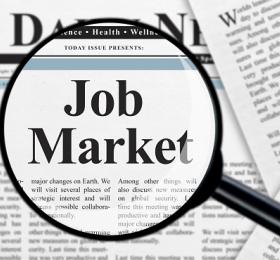
The US labor market ended the first half of 2022 with a bang, adding 372,000 jobs. Private payrolls expanded by 381,000 as government jobs fell by 9,000 in the month of June. The official unemployment rate was unchanged at 3.6% MoM, whereas U6 meaningfully declined from May’s reading of 7.1% to 6.7% last month. Moreover, BLS notes that this report essentially brings us back to pre-Covid levels in terms of the number of unemployed Americans (5.9M today vs 5.7M in February 2020) and the unemployment rate (3.6% today vs 3.5% February 2020). Hiring was particularly strong on the services side of the economy—something we are watching carefully as inflation evolves. In fact, hiring in business and professional services and leisure and hospitality totaled 141,000 last month. Payrolls within healthcare also notably increased by 57,000. Wages for US workers increased 0.3% MoM, which brings us to a 5.1% annual clip (still not outpacing inflation at this stage). Today’s report seemingly clears the way for the Federal Reserve to raise rates yet again this month. The big question is whether we will see 50 or 75 bps from Mr. Powell and his cohorts at the FOMC. Should inflation continue to increase on a monthly basis the odds seem to favor a 0.75% increase later this month.
With all of the headlines and geopolitical chaos that have defined 2022 to date it seems fitting to note that Boris Johnson has officially resigned as the prime minister of the United Kingdom. Johnson survived a vote of confidence roughly one month ago but confirmed his resignation early Thursday morning. Johnson’s administration had been plagued by various scandals over the years; however, the mass exodus of ~50 MP’s from his flailing government ultimately resulted in his undoing at the helm of UK politics. A new government will likely be formed under new leadership in the coming weeks amid slowing economic growth and lingering inflationary pressures in Great Britain. This ugly combination of civil unrest and economic malaise certainly sounds familiar. Could fiscal policy rule the day in the UK as hawks circle at the Bank of England?
Back to domestic matters… the Biden administration has made it clear over the past 12 months or so that inflation is a priority. The problem is President Biden and his group of economic advisors have shown little ability and/ or creativity in crafting a reasonable response. We have seen countless releases from the Strategic Petroleum Reserve (SPR) and a lot of finger-pointing to little avail at the pump, grocery, etc... As we noted in late February, wars tend to fan the flames of inflation, but inflationary pressures were setting in long before Russia invaded Ukraine. Perhaps the most significant blow to prices in the energy complex year to date was dealt by the Supreme Court in its decision to restrict the powers of the EPA. Other downward pressures on a range of commodities stem from softening economic data and the rising likelihood of a global recession.
Speaking of the “R-word,” it is difficult to imagine a recession in the US with an official unemployment rate well below 5% and job openings remaining relatively plentiful (May JOLTS >11.25M). However, we are beginning to see demand for workers weaken among American employers as consumers become more cautious in their spending habits. At the household level real spending is beginning to decline with inventories building at US retailers—this is typically a strong headwind for inflation, though it also raises the odds of recession (we are very much a consumer-driven economy). Perhaps the biggest argument against an imminent recession is the sheer magnitude of money in the US economy. M2 is hovering near records just shy of $22T. Of course, if we were to adjust for inflation, that figure would be closer to $7.5T in real terms. While $14.5T is quite an inflationary haircut, real M2 remains roughly 26% above pre-pandemic levels. Now, that is quite a cushion for the domestic economy—and one that US businesses will be leaning on this earnings season!
It's that time again, so ready your pencils, erasers, and calculators. 2Q earnings season is upon us, and estimates remain quite strong despite a rather rough first half of the year. Operating profits at S&P 500 firms are at records, and guidance for the back half of the year will be critical as we assess the likelihood of future earnings growth among the world’s best run companies. The Fed’s hawkish path is also important in terms of earnings and valuations—3.25% is looking like a reasonable possibility for Fed Funds by yearend. So, with that we are lowering our expectations for the second half of 2022 and moving our target for the S&P 500 to 4750. Earnings must hold up in order to justify this valuation, so we will be keeping a close eye on the facts and figures as reporting season kicks into high gear.
Market Outlook: Neutral USD, Neutral Duration, Neutral Equities
News Release: Bureau of Labor Statistics (The Employment Situation- June 2022)